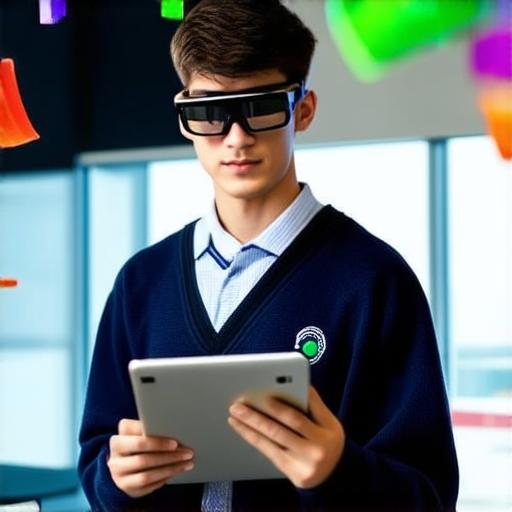Augmented reality (AR) refers to a technology that enhances real-world experiences with computer-generated images, sounds, and other digital elements. In the context of education, AR has the potential to revolutionize how students learn by providing immersive and interactive experiences that engage and enhance their understanding of complex concepts.
What is Augmented Reality?
AR is a technology that overlays digital information onto real-world objects or environments. This digital information can include images, videos, 3D models, animations, and sounds, which can be accessed through a variety of devices such as smartphones, tablets, and wearable devices. AR provides a new way for students to interact with educational content in a more engaging and interactive way, allowing them to explore concepts from different perspectives and gain a deeper understanding of the material.
How Augmented Reality is Used in Education
AR has a variety of applications in education, including:
- Virtual Field Trips
- Interactive Learning
- Language Learning
1. Virtual Field Trips
One of the most popular uses of AR in education is for virtual field trips. With AR, students can explore different locations and historical events from the comfort of their classrooms. For example, an AR app could transport students to ancient Egypt, where they can interact with virtual artifacts and learn about the culture and history of the time.
2. Interactive Learning
AR provides a new way for students to engage with educational content in a more interactive and engaging way. With AR, students can manipulate 3D models, simulate experiments, and explore concepts from different perspectives. For example, an AR app could help students visualize the solar system, allowing them to interact with planets and moons and learn about their properties and relationships.
3. Language Learning
AR has also been used in language learning. With AR, students can practice speaking and listening skills through immersive virtual conversations. For example, an AR app could simulate a real-life conversation between a native speaker and a non-native speaker, allowing students to practice their language skills in a safe and supportive environment.
Benefits of Augmented Reality in Education
AR has a number of benefits that make it a powerful tool for education, including:
- Increased Engagement
- Improved Understanding
- Enhanced Creativity
1. Increased Engagement
AR provides a new way for students to interact with educational content, which can increase their engagement and motivation to learn. By providing immersive and interactive experiences, AR can help students stay focused on the material and retain more information.
2. Improved Understanding
AR allows students to explore concepts from different perspectives, which can improve their understanding of the material. For example, an AR app could help students visualize complex math concepts, allowing them to see how they are used in real-world scenarios.
3. Enhanced Creativity
AR provides a platform for creativity, as students can explore and manipulate digital elements to create new and innovative projects. By using AR, students can develop their creativity skills and express themselves through technology.
Conclusion

Augmented reality has the potential to revolutionize how students learn by providing immersive and interactive experiences that engage and enhance their understanding of complex concepts. With its ability to increase engagement, improve understanding, and enhance creativity, AR is a powerful tool for education that will continue to evolve in the years to come. As technology continues to advance, we can expect to see even more innovative uses of AR in education.
